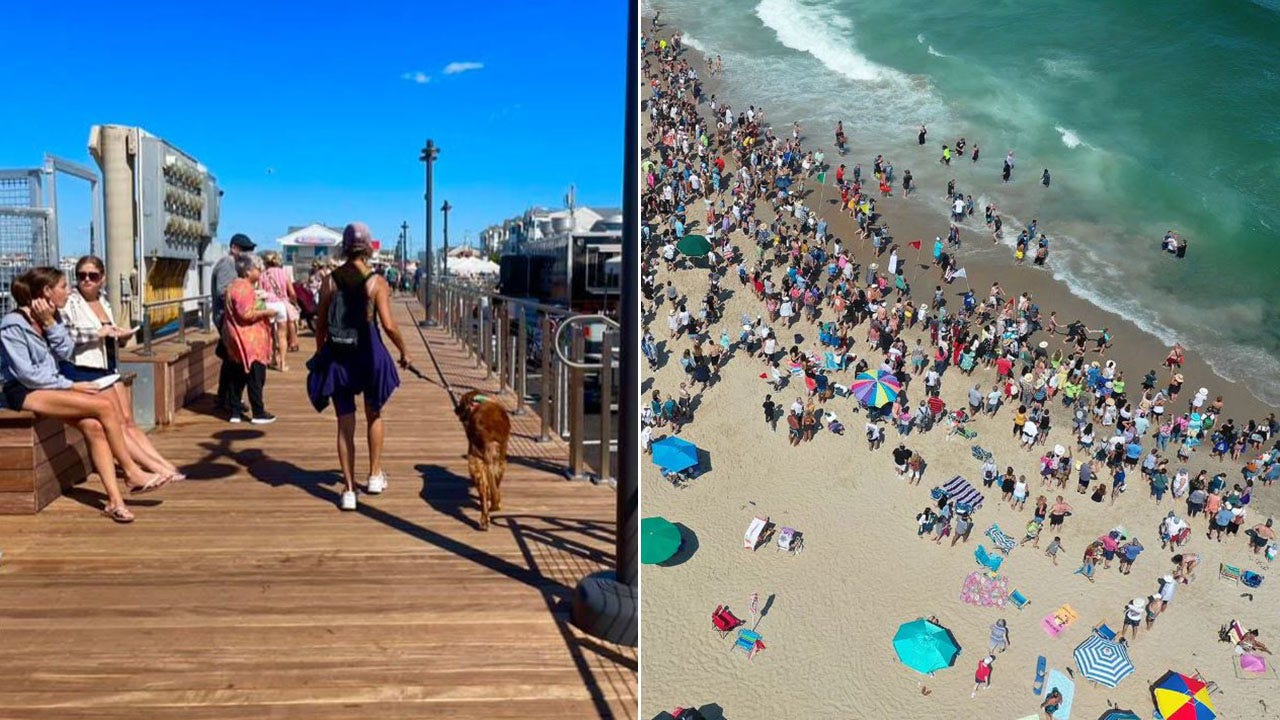For years, Father Joe’s Villages, a nonprofit homeless services provider and housing developer in Southern California, could reliably count on the insurance premiums for its properties rising up to 10 percent every year.
But this year, the insurance bill hit $4.4 million — quadruple the previous year. And that was on top of a sharp increase in deductibles.
The sudden price hike was hardly unique. From Rhode Island to Louisiana, and Texas to Washington, developers of affordable housing have been reeling from exponential surges in property insurance premiums.
Calling the situation “very grave,” Jim F. Vargas, the president and chief executive of Father Joe’s Villages, warned that rising insurance costs could “derail not only our plans as a homeless services provider and developer from constructing additional buildings, but it could derail, frankly, the plans for housing in general to be developed in this state.”
As anecdotes about escalating insurance become more commonplace, most of the attention has focused on the owners of single-family homes and condominiums in states that have been pummeled by floods, fires and one climate disaster after another. Homeowners are struggling to keep up with costs. Insurance carriers are hemorrhaging money and no longer writing policies in certain areas.
Less attention, though, has been paid to rental housing, particularly for low and moderate income people. Unlike market-rate apartment developers, those building multifamily projects financed by subsidies and tax credits do not have the ability to simply pass on those higher insurance costs to tenants, since they are limited by government guidelines as to how much rent they can collect.
As a result, developers and housing advocates are appealing to state lawmakers and others for assistance, contemplating alternative but potentially riskier avenues to insure themselves, or even exiting the affordable-housing business altogether.
Overall, nearly one-third of affordable housing providers reported increases of at least 25 percent, according to a survey conducted last fall by the National Leased Housing Association, whose members provide federally assisted rental housing through vehicles such as vouchers and tax credits.
“In 2020, I would have said this is cyclical, the pendulum always swings,” said Denise Muha, the organization’s executive director since 1988. “But this is totally different. I don’t see this really curing itself anytime soon.”
Last year, the National Oceanic and Atmospheric Administration recorded 28 weather and climate disasters, eclipsing the previous high of 22 in 2020, resulting in at least $92.9 billion in damage. Between 2011 and 2021, 90 percent of all counties in the United States had federal disaster declarations, with five counties in Louisiana and Kentucky being the most frequently hit.
Inflationary pressures and an increase in litigation and large-dollar judgments have also exacerbated market conditions, said Thom Amdur, a senior vice president at Lincoln Avenue Communities, which owns affordable-housing rental apartments in 27 states, largely in the Southeast.
“There’s a multitude of causes, so it’s kind of like a perfect storm,” said Mr. Amdur, a former president of the National Housing and Rehabilitation Association, who wrote a paper on the topic this year.
Housing advocates say the price squeeze has been felt well beyond disaster-prone areas in California, Florida, Texas and Louisiana.
In Rhode Island, Francis J. Spinella, an affordable housing consultant who has been involved in the field for more than 30 years, is now trying to refinance Wickford Village in North Kingstown, a 129-unit Section 8 development, in order to do capital improvements.
But the insurance climbed by 62 percent from last year to $176,000. And since premiums are priced on a per-unit basis, more money going toward insurance means less money going toward renovations or staffing or other services.
“It severely impacts your operating budget,” he said. “You can only squeeze a dime so many times.”
Insurance brokers who help affordable housing providers have been redoubling their efforts to overcome stereotypes, if not outright redlining discrimination, that historically tended to elevate rates in low-income neighborhoods.
Justin Dove, an executive vice president for Gallagher, one of the world’s biggest insurance brokers, said affordable housing developers in many cases should be considered desirable owners because they are often more invested in a project’s long-term viability, and more likely to use durable and cost-effective materials.
“Their buildings are really curated for living a good, long life,” said Mr. Dove, who is based in San Francisco. “They’re not building it to flip it.”
As a safeguard, New York State passed a law in April preventing insurers from increasing premiums or canceling policies if a property has regulatory restrictions related to residents’ incomes, or if residents receive rental assistance such as federal Section 8 vouchers.
The Housing Partnership Network, a national group of nonprofit housing developers, has also expanded an insurance initiative that it began offering its members after 9/11, when insurers raised premiums and canceled coverage for many developers. About two dozen developers now belong to the Housing Partnership Insurance Exchange, up from 14 initially, and together, the exchange insures over 100,000 units of housing valued at more than $26 billion, said Chuck Wehrwein, the network’s chief operating officer.
Insurers have said that over the past decade they have often paid out more in claims than the premiums coming in. Tort reform and increased resilience — making structures more resistant to extreme weather — would help, said Robert Gordon, a senior vice president with the American Property Casualty Insurance Association.
Sean Kevelighan, chief executive of the Insurance Information Institute, a trade group, said low-income areas tend to be more prone to flooding and other catastrophic damage, and a “more communal approach” in some of those areas has lately been finding “new ways to adapt and promote resilience.”
Case in point: Three Habitat for Humanity affiliates in Kentucky are adopting a voluntary standard to protect buildings against high winds and heavy rain.
On the federal level, the Department of Housing and Urban Development has been adjusting its formula for operating costs on some of its properties to reflect rising expenses for insurance, utilities and more. In 2023 and 2024, those adjustments increased by 6.1 and 5.3 percent, respectively — or more than double previous years.
Some states are also taking action. In Texas, where one community developer in Houston has already put a building on the market because of untenable insurance increases, Lt. Gov. Dan Patrick has asked a State Senate committee to analyze the effects of rising insurance premiums.
Under a new law in Washington State, officials are also analyzing insurance, but specifically for housing providers involved with the state’s Housing Trust Fund. Last month, Flo Beaumon, vice president of Catholic Housing Services, told a State Senate housing committee about how a tenant in one of the group’s projects had left a pot on the stove, triggering a small fire. The sprinklers went off, causing flood damage. Later, rats chewed the water pipes. More water damage.
Each flood remediation, she said, could cost Catholic Housing Services $50,000 — for a building whose entire annual operating budget is $350,000.
“Our insurance premium has tripled in the last five years, but what’s really awful is our deductible, based on experience, is now $500,000 per incident — which means we do not have insurance unless we have complete building failure,” she told the committee. “It’s not sustainable.”
In Northern California, Eden Housing, a nonprofit that owns and manages 10,000 multifamily apartments, serves residents whose incomes fall below 60 percent of median income, which was $88,000 for a four-person family in Alameda County in 2023.
Like most West Coast developers, Eden has traditionally resorted to wood-frame construction, in contrast to the more expensive masonry and concrete used in the East.
But insurance for wood-frame construction has soared because of concerns about wildfires and arson. So if Eden switched to concrete for one particular project in East Oakland, the additional cost would be cheaper than the insurance for a wood-frame structure.
“The pricing on construction goes up by $2.5 million, but our construction-period insurance premiums come down,” said Linda Mandolini, Eden’s president. “It’s cheaper to change the construction than it is to buy the insurance is the bottom line, and that’s crazy.”
All of these considerations weighed on Mr. Vargas, of Father Joe’s Villages, during a recent tour of the group’s properties in downtown San Diego.
The Saint Teresa of Calcutta Villa project opened in early 2022. It has 407 units, two-thirds of which are classified as permanent supportive housing for people who had once been homeless and now receive services to keep them off the streets.
Tampatha Climons, one of the tenants, used to live in a two-bedroom apartment in National City, Calif., and worked in food service. When her health started to decline, she ended up in homeless shelters in San Diego for several years before moving into a studio at Saint Teresa three years ago.
Now 52, Ms. Climons is five credits away from receiving two associate’s degrees.
“I was one of the lucky ones that first got housing,” she said. “A lot of people applied, and they’re still on a waiting list that is so long.”
Two years ago, Father Joe’s Villages was paying $450 per unit in insurance; now, that figure is $2,000. With rents set at 30 to 60 percent of a tenant’s income, some tenants pay less than $800 a month, while those in permanent supportive housing typically pay $100 to $300.
So the organization is putting potential future projects on hold. Mr. Vargas said he was cautiously optimistic, though, about breaking ground on 400 units of affordable housing in four buildings that have already been approved.
“A home is what breaks the cycle of homelessness,” Mr. Vargas said.






